F/Lt Baron Jean de Selys Longchamps’ Attack on Secret Police HQ and a hectic day for No.609 Squadron – 20th January 1943
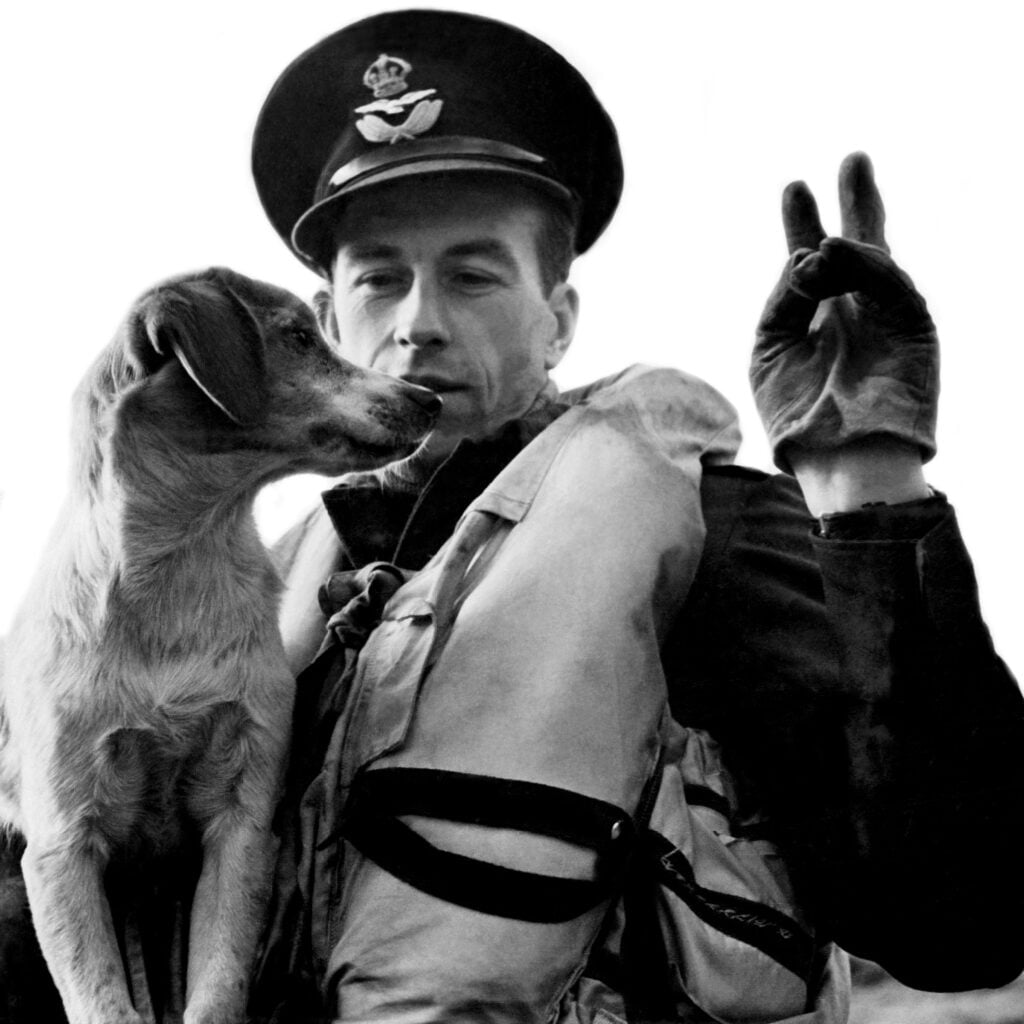
Baron Jean Michel P.M.G. de Selys-Longchamps was born 31st May 1912 in Brussels as the son of Baron Raymond Charles Michel Ghislain de Selys-Longchamps and Emilie de Theux de Meylandt et Montjardin.
Initially part of the Belgian Cavalry, when Belgium capitulated he left for England from Dunkirque. Soon after he went back to France where efforts were being made to establish a Belgian Army. When the Franco-German armistice ended, he found his way to Gibraltar via Marseilles. There he joined a group of Belgian pilots trying to reach England via Morocco but he was apprehended and imprisoned in a POW camp near Montpellier. He escaped and arrived in England where he immediately reported as a volunteer, forging his papers so he could be trained by the RAF as a fighter pilot, as, at 28 years old, he was too old to be admitted.
He served with 609 Sqn of 11 Group from 30th September 1941 onwards. Here he quickly developed into an aggressive and able pilot.
Through his Belgian contacts, Jean de Selys kept up to date with developments in his country and soon he devised a plan to raid the Secret Police HQ (often described as a ‘Gestapo HQ’) in his hometown of Brussels. His main motive was to raise Belgian morale by hitting a strong symbol of Nazi occupation at its heart. Over time, German police became increasingly oppressive in Belgium: between 12th December 1942 and 13th January 1943, sixty eight persons were shot in retaliation.
Since our original posting of this article, we have been made aware by Marc Audrit (a biographer of de Selys) that suggestions that de Selys’ motives were because his father had died from having been tortured by the security police (SIPO) are incorrect (as was previously in this article), and in fact his father died peacefully in 1966, so we are happy to correct with his assistance.
Since 1940, the security police and the secret police (SIPO-SD) was in an apartment building at 453 Avenue Louise that Jean de Selys knew pretty well as one of his friends lived there before the war. After finalizing his plan he repeatedly asked authorities for permission to carry it out but his request always fell on deaf ears. He continued planning his action in secret, however.

By 20th January 1943 he still didn’t have an answer so he decided to proceed on his own. That day, together with his wingman and comrade F/S Blanco they took off for Belgium in their Hawker Typhoons, with orders to attack railway junctions in Belgium. de Selys armed his aircraft to the limit and took along a bag full of little Belgian flags that Belgian schoolchildren in London had made for him.
After completing their official mission, Jean de Selys knew he finally had his opportunity and ordered his wingman to return to England alone and set course for Brussels himself. Flying as low as possible, he reached the Belgian capital unscathed, soon found his target and, with guns blazing, launched his attack. He executed his attack so precisely that the building was riddled with bullets but no other object was hit. He scattered his little flags over Brussels, dropped a Belgian flag over the Royal Palace at Laken and another one in the garden of his niece, Barones de Villegas de Saint-Pierre before returning to Manston.
During the attack, four German soldiers were killed instantly including the Chief of the SD, SS-Sturmbannführer Alfred Thomas and a high-ranking Gestapo officer named Commander Müller. Numerous others were either lightly or gravely inured. Some reports suggest at least 30 were killed. The building itself had sustained so much damage, it took more than six weeks before it could be used again.
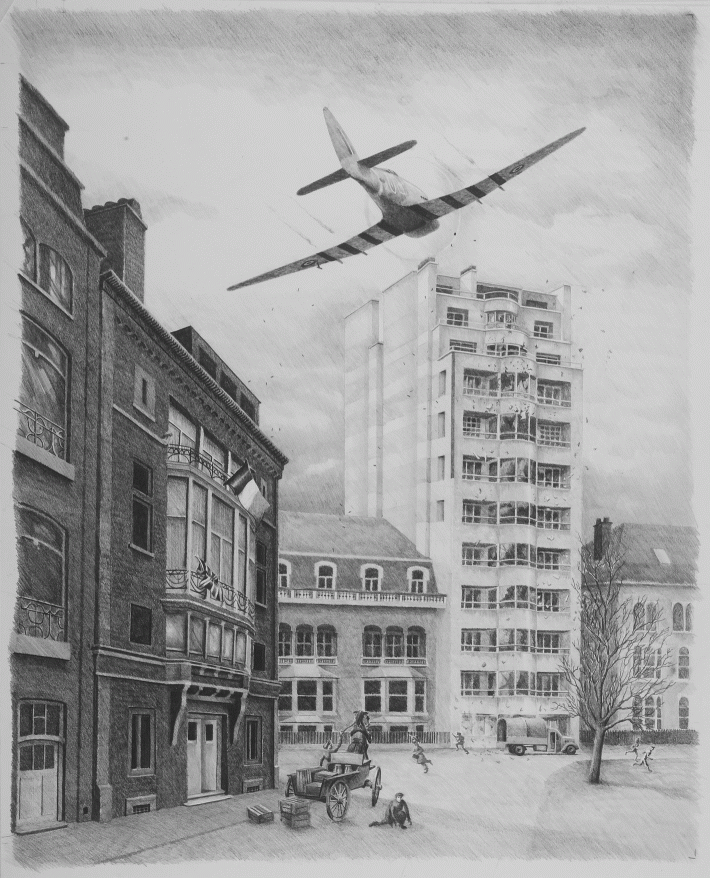
On his return to base, de Selys received a warm welcome from his comrades but was demoted to from Flight Lieutenant to Flying Officer and transferred to No.3 squadron on 13th March in punishment for disobeying orders to fly off and play resistance fighter. Despite his degradation to Flying Officer, the British awarded him the DFC later on 31st May 1943 (his birthday) – The citation read:
This Officer is a pilot of exceptional ability and keenness. He shows a great offensive spirit and is eager to engage and destroy the enemy whenever possible. He has shown his great courage and initiative in numerous rail transport and the Gestapo headquarters attack in Brussels. He has also destroyed at least one enemy aircraft and damaged another.
On 609 Squadron’s last day at Manston for this period on 20th July 1943 (the Squadron would return in December), F/O van Lierde and F/O de Selys were awarded their DFC’s on the parade ground at Manston.
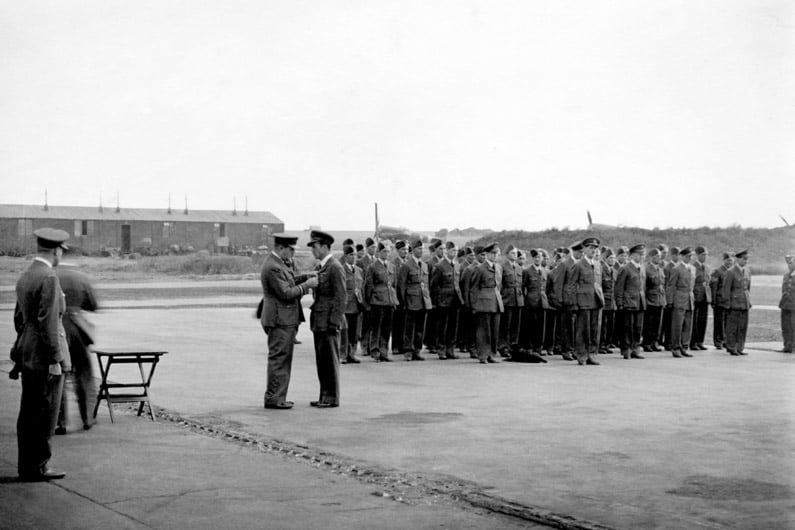
The next day (21st July 1943) was Belgian Independence Day with F/O de Selys, F/O van Lierde and ex 609 Squadron F/Lt Lallemand receiving their Croix de Guerres on another eventful day for No.609 Squadron.
Text from No.609 Sqn ORB (Operational Records Book) Form 540:
Belgian Independence Day and Squadron Annual release. It rains all day, and few pilots (though F/Lt Wells DFC of Napiers is one of them) attend the parade at Wellington Barracks at 0930, where F/O’s van Lierde and de Selys this time receive their Croix de Guerres, as does now F/Lt Lallemand of Napiers. There are also few 609 pilots to be seen at the Te Deum at Westminster Cathedral, though the IO is present, also much Belgian soldiery with fixed bayonets and a military band which competes at times with church music. Nearly all officers of 609 are however present at the first unofficial rendezvous of the day at the Ritz bar, including such old boys as F/Lt’s Wells, Nitelet and Morai.
To the official Belgian lunch at the Savoy only 5 members of the Squadron have been invited, so F/O Renier as senior Belgian lets his good nature get the better of his discretion and at the last moment invites the whole lot, and by the time they have hastily seated themselves it looks as if several Belgian generals will be lacking seats. It works alright however, the band plays lustily and both Kings are toasted.
During the afternoon much beer is drunk at Chez Gaston, Belgian club, while the CO and the IO visit Air Commodore Peake at the Air Ministry, delivering into his keeping for the duration all the Orde drawings, which have been brought up to town in the Belgian Barouche. Prior to this the IO has taken delivery of 2-dozen pewter mugs, with the Squadron crest, which the Air Commodore has most generously presented.
Between 1800 and 2000 hours Shepherd’s Inn gradually fills with 609 types, old and new, officer and NCO, the last to appear being S/Ldr Beamont, DSO, ie (of Hawkers) and wife. F/O Raw DFC (of Hawkers) and S/Ldr du Monceau de Bergandael DFC, now CO of 349 (Belgian) Sqdn, are also seen.
Disorganisation sets in, and many hats are lost, exchanged or acquired. Final session is at the Wellington Club, but the writer by this time has had enough.
On 16th August 1943, after returning from a mission with No.3 Squadron over Ostend in his beloved Belgium, de Selys was killed when his Typhoon Ib EJ950 QO-X crashed at Manston after returning from a sortie in the morning from Manston to Ostend. It is a possibility that the aircraft was damaged by flak. It suffered structural failure, breaking into two and crashed on approach. You can find his grave, number 3002A, in Minster Cemetery nearby.
Text from No.3 Sqn ORB (Operational Records Book) Form 540 (extract):
The Squadron suffered one of its greatest losses in losing F/O de SELYS who was undoubtedly one of the finest and highly skilled pilots of his day. He had an outstanding personality of great charm and by his initiative and great daring set an example to others that was of incalculable value to the Squadron. His death was deeply mourned by every member of the Squadron as a personal loss. He had been to GHENT on an INTRUDER operation and it can only be presumed that his aircraft had been badly damaged by flak and that just prior to landing, some part of the aircraft snapped causing it to dive out of control.
AIR 27/33/59
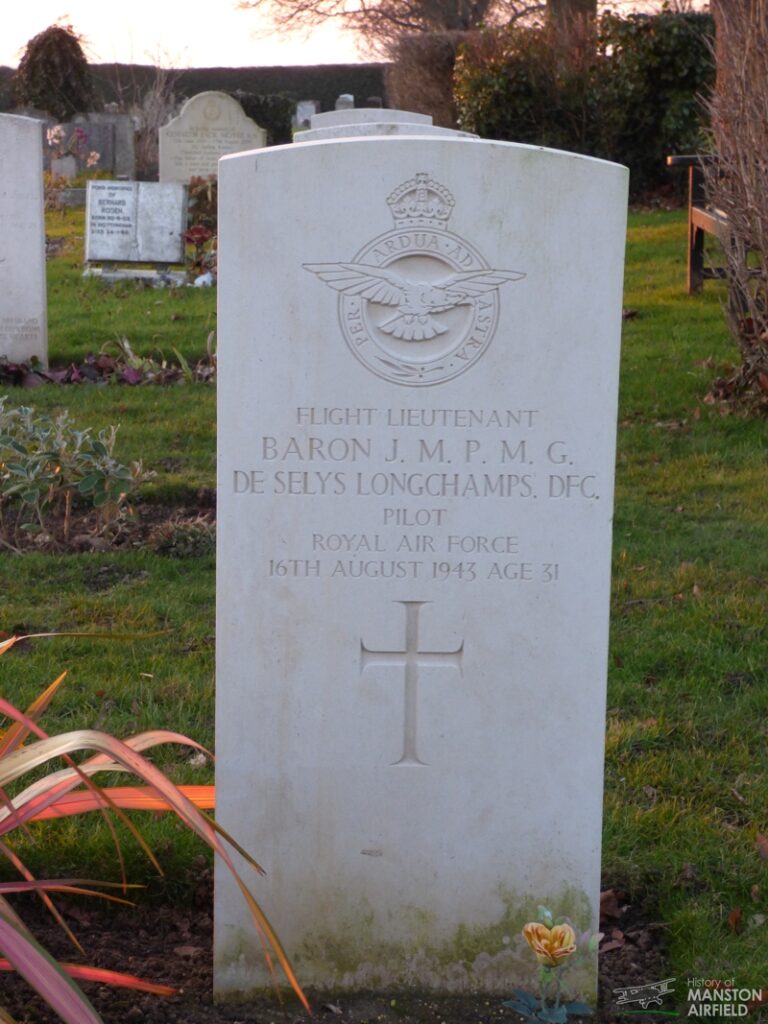
Number 453 Avenue Louise still stands today, and the Belgian people have erected a statue to their heroic, if disobedient, flying resistance fighter.
To look at the location of the former Secret Police building, you can see it on Google Maps (best viewed on Google Chrome) here, although the large tower block opposite is a more recent addition: https://www.google.co.uk/maps/@50.8177103,4.3750816,306a,20y,270h,43.58t/data=!3m1!1e3
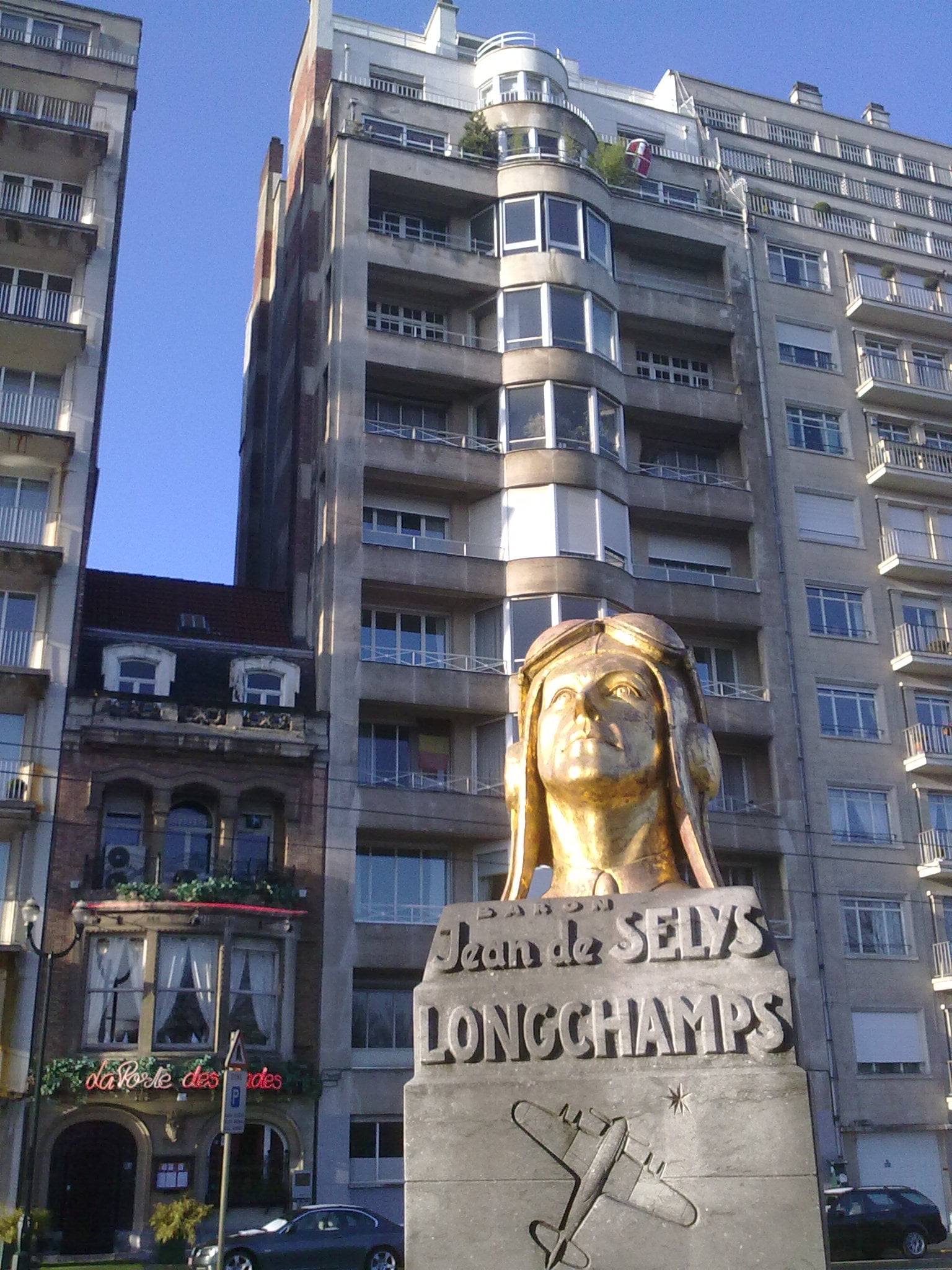

Apart from F/Lt de Selys’ raid and earlier mission accompanied by F/S Blanco, No.609 Squadron had a very busy day but some were in trouble with the law after celebrations later that night, as detailed in the official records below.
Text from No.609 Sqn ORB (Operational Records Book) Form 540:
F/Lt de Selys’ special Rhubarb plus the Germans biggest daylight raid since the Battle of Britain combine to make this the Squadron’s most successful day since the Battle of the Dinghy on 8th May 1941. It also sees the dawning of a new star in the shape of F/O Baldwin, who emulates the famous Sergeant Rigler DFM in getting 3 Destroyed in one sortie.
Here is the day’s score:
Enemy Casualties: 1 Loco Cat B (F/Lt de Selys – Belgian) Gestapo HQ (Brussels) shot up (F/Lt de Selys – Belgian) Flags dropped (Brussels and villages) (F/Lt de Selys – Belgian) 2 Locos. Cat B (F/Sgt Blanco – Belgian) 1 Fw.190 Destroyed (F/O Lallemand – Belgian) 3 Me.109G Destroyed (F/O Baldwin) 1 Fw.190 Destroyed (F/Lt Atkinson) 1 Fw.190 Damaged (F/O Raw) 1 Fw.190 Destroyed (F/O van Lierde – Belgian) Our Casualties: 1 Typhoon Cat A (F/O Baldwin unhurt)
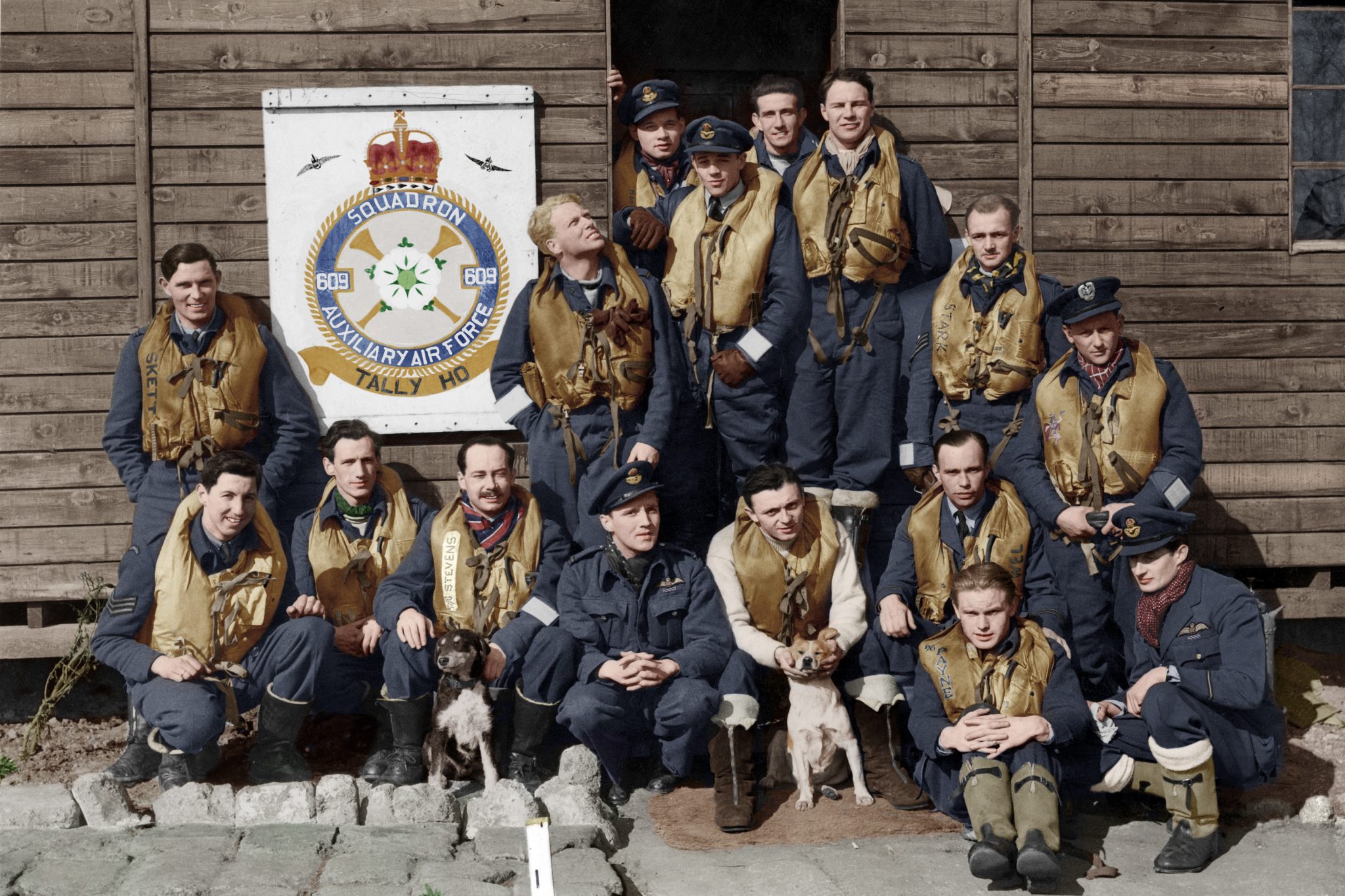
Standing L-R: F/O Howard Skett, F/Lt Erik Haabjoern, F/O George ‘Moose’ Evans, S/Ldr Roland ‘Bee’ Beamont, F/O Matthew ‘Paddy’ Cameron, F/O Peter ‘Slosher’ Raw, F/Sgt Lawrence ‘Pinkie’ Stark, F/O Antoni ‘Tony’ Polek.
Front L-R: Sgt Chester ‘Ches’ West, F/Lt James Humphreys, P/O Geoff Stevens, F/O Remy ‘Mony’ Van Lierde, Adj. Plt. Andrea ‘Le Men’ Blanco, F/Lt Johnny Wells, F/O Roy Payne, F/O Raymond ‘Cheval’ Lallemand. The dogs are Blitz and Spit.
At 08:32 the Rhubarb takes-off for Belgium. De Selys, after shooting up a train SE of Bruges, leaves Blanco to continue the train busting, and deciding the weather is now suitable for his visit to the capital, steers over Ghent at Oft and arrives. After photographing the Palais de Justice (unfortunately his camera was not working) he flies over the Cinquantenaire Memorial and the Cavalry Barracks, then climbs to 2,000 feet and dives on the Gestapo HQ in the Avenue Louise, raking it from top to bottom and no doubt breaking many windows. Then he climbs again and drops first the Union Jack, then the flag of Belgium over a populated square (one damages his tail plane slightly). There is no opposition whatsoever, and after some more photography he flies back to the coast, dropping about 1000 miniature Belgian flags at various villages. North of St Omer two German soldiers on a horse-drawn vehicle jump for cover. He is back by 09:44.
Meanwhile F/Sgt Blanco, after making a dummy attack on a passenger train near Aeltre, sees the passengers disembark. He attacks a goods train travelling in the opposite direction, and this stops so near the passenger train that he is able to make 6 attacks on both engines, seeing strikes and steam.
Two minutes after the departure of the Rhubarb F/O’s Lallemand and Raw take-off on standing patrol. They are flying West towards Dungeness when ‘totter’ rockets are seen at Dymchurch, then 2 Fw.190’s below, flying East inshore of a convoy. Lallemand had begun to dive when both E/A made a climbing turn towards him. He finds he can out-turn them, and getting behind the leader fires 3 bursts from about 10 degrees. He sees strikes on both wings, then flames from the cockpit. Then he sees blue smoke on both sides of his own cockpit, and thinks erroneously that he has been hit by E/A No. 2. It is known from other sources that the first E/A went into the sea. Meanwhile Raw has pursued E/A No. 2 towards France, but loses sight of it owing to oil on his windscreen. Finally he sees it return towards Dover, and being shot at by the convoy.
At about 12:45 the IO, hearing AA in action, looks out of the window of the Intell Office and sees wreaths of smoke trails overhead such as he has not seen since the Battle of Britain, except that now they are against cloud instead of clear blue sky. He goes out and is nearly run down by the CO driving furiously towards his A/C. A Squadron of Spits flies over, then a Typhoon makes a homing dive on the aerodrome. Immediately a Spit detaches itself and fires (they have been told, it is learnt later, that 30 Fw.190’s are attacking Manston). He misses, and other Spits put themselves menacingly on the Typhoons tail, which, to the IO’s relief, lowers its undercarriage just in time.
Other observers are watching a parachute going down near Ramsgate, which turns out to be a German. The Typhoon pilot is F/Lt de Selys. He reports having seen smoke trails and 8-12 E/A at 20,000 feet near Deal. Controller however told him of others at 14,000 feet near base. He dived to this height, but failed to see any, and had to land to refuel. There are however 2 other Sections up, one on standing patrol, the other Scrambled. The latter, off at 12:29, also try to intercept the bandits reported at 14,000 feet, but actually find them at 20,000 feet – 8 Me.109’s. They attack the formation, which breaks up, and then attack 3 which detach themselves and head for Dover. In firing at one of these F/O Creteur gets into a spin which puts him out of the fight. F/O Baldwin, however, fires in quick succession at the other 2 from about 100 yards astern. The first sheds its cockpit hood and smoke; the second disintegrates completely, and as it explodes the starboard wing of the first drops off. Meanwhile the third is on his tail. He makes it overshoot by skidding, and attacks it as it dives for cloud at 10,000 feet, seeing strikes. Below cloud he sees a parachute, which he circles and fixes. His own damage is a tyre, flap and petrol tank damaged.

Meanwhile F/O’s Wells and van Lierde have climbed to 14,000 feet on hearing bandits reported at this height, but before reaching it van Lierde sees 12 A/C at this height headed for Dover. He loses them in cloud, however, and is told to patrol below cloud base at 27,000 feet Two bogeys are then reported at 6,000 feet, and he is just going down when 2 Me.109’s pop out of cloud in front of him. He fires a short burst at the second, but they pull up into cloud again, very sharply. Ten minutes later he sees another pair of 190’s, dipping in and out of cloud base, headed South. By this time he is thoroughly aroused, so he takes a parallel course S. of Dover at 26,000 feet, and finds them again, quite close. He attacks in a dive from astern at 350 yards and this E/A at once catches fire below the wings. After 4-5 seconds firing, its dive steepens, and it becomes a ‘ball of fire’. Not satisfied even yet, van Lierde continues shooting until suddenly his own cockpit fills with smoke, and he jettisons his hood all ready to bale out. The smoke then abates, and he lands, very excited, but without damage. “I really got one Ziegly!” he tells the IO, who by this time is finding it difficult to cope. F/O Wells has only had time for a shot at an Me.109 before this dives into cloud at 10,000 feet (F/O van Lierde’s combats are well above the height any Typhoon has yet fought, or even been expected to fight).
The CO, who Scrambles himself at 13:01, loses 2 Fw.190’s in cloud before he can get a shot in, and uses a bad word on the R/T. He is then attacked (and fired at) first by clipped-wing Spitfire (which he out-turns) then by another believed Mark VI.
The total strength of the raid staged by the enemy is estimated at about 90. Of these some 30 were the ‘business’ wing, destined for London (some 12 got there), the rest consisted of 2 diversionary sweeps, and it was probably one of these that 609 Sqdn intercepted.
Fighter Command’s defensive effort was some 214 sorties, and the total Destroyed was 12 or 13. Of these 609 obtained 4 (one third) for 7 sorties. There were only 7 or 8 serviceable aircraft Baldwin only got his third confirmed about 10 days later, when he helped to interview one of the two prisoners he accounted for (and who was only picked up 2 days after the event). This P.O.W., after previously telling a completely false story, (such as saying he was shot down on Jan. 19th during a practice Flight) eventually described the circumstances of his combat, which agreed in all essentials with Baldwin’s third Me.109. Though he expressed surprise that he and his pal had both been shot down by ‘a worm like Baldwin’ (he evidently expected someone 7ft high) he gave his opponent his handsome clasp knife as a souvenir, Baldwin also getting the Mae West of the other prisoner.
At 1425 F/Lt Atkinson, who has spent the day watching pilots come down with victory after victory, philosophically takes-off on a stooge patrol with F/O Raw. He returns in 23 minutes, having himself shot down a Fw.190, with a Damaged for Raw. And very peculiar 190’s they were. They saw them turning in front of them 5 miles E. of Dover, and Swingate said they were friendly. And friendly they looked and behaved: they rocked their wings and their crosses, on a grey background, were enclosed by most misleading yellow roundels. On Atkinson’s first attack, however, they turned and headed quickly for France, using the usual jinking and crossing-over tactics. This enabled the Typhoons to gain slightly, and both fired at each alternately, seeing strikes on both. When Raw finished his ammo, he continued shooting with his camera. Atkinson, after several bursts from 300 closing to 250 yards, saw a flash on the wing and the 190 dived into the sea 15 miles SE of Dover. Atkinson’s victory was quite the most popular of the day, representing a reversal of his usual luck. NB The German POW’s respectively dubbed the Typhoon a ‘Vultee Vanguard’ and a ‘Mustang’!
Evening sees a justified celebration at the Old Charles, attended by all pilots not on leave or sick. Total present: 18. On emerging, the driver of one of the taxis cannot at once be located, so F/Lt de Selys takes-off without him, accompanied by F/O Wells and F/O Nankivell. It is not long before Doone House is invaded by police, and the culprits are marched off to the police station. F/O Evans, who protests against this, somehow gets rounded up too, but only remembers he is not one of the guilty ones half way through the proceedings (then volubly). The attempts of the inspector to come the heavy father fail dismally to extract the slightest filial sorrow from the accused, and in the small hours the police give it up, and after a day or two they are taken by the Station Commander to see the chief constable.
AIR 27/2103/1
Manston Station ORB for 20th January 1943 (extract):
There was much medium cloud during the day, the base beginning to lower with the evening and weather deteriorating slightly. This day, with the exception of defensive patrols carried out by 137 Squadron, was another day for 609 Squadron. During the day, 609 Squadron, who had only at the best, 8 aircraft operational, managed to carry out standing patrols, rhubarbs and scrambles, damaged 3 engines, shot up the Gestapo Headquarters in the Avenue Louise in Brussels, shot down 5 enemy aircraft and damaged 2 others. At 0832 hours, 2 aircraft of 609 Squadron took off with the “paper objective” to patrol railways between Ghent-Courtrai, and the following are the actual results:-
F/Lt. de Selys (Belgian) attacked a goods train near Bruges seeing many strikes on the engine and flew on to Brussels to carry out a special mission. Arriving at Brussels, he photographed the Palais de Justice, flew over the Palais Royal, Cinquantenaire Memorial and Cavalry Barracks, climbed to 2,000 ft. and dived on the Gestapo Headquarters in the Avenue Louise, raking it from top to bottom with cannon fire, seeing strikes. He again climbed to 2,000 ft. dropped a Union Jack and then a Belgian flag over a populated square, re-photographed the Palais de Justice and flew low over North Brussels. On the way back to the coast, he dropped about 1,000 miniature Belgian flags on various villages and frightened two German soldiers on a horse-drawn vehicle. No flak was met with throughout the trip. On his return, his camera was found to be u/s.
F/Sgt. Blanco (Belgian) made a dummy attack on a passenger train near Aeltre which stopped, the passengers disembarking. He then proceeded to attack a goods train going in the opposite direction, which stopped on attack, and both engines are claimed as “Cat.B.” F/Lt. de Selys and F/Sgt. Blanco landed 0944 hours. At 0834 hours, red section took off on a defensive coastal patrol, and when off Dymchurch, sighted 2 FW.190’s flying at 200 ft. flying E. inland of a convoy off Dungeness. F/O. Lallemand (Belgian), turned in and attacked No.1 enemy aircraft, diving and turning from 800 ft. seeing several strikes on wing and flames from in front of the cockpit of the enemy aircraft which turned and headed for France. Information from other sources shows that this aircraft went into the sea and is, therefore, claimed as destroyed. The second enemy aircraft was chased by F/O. Raw who did not, however, fire owing to having his windscreen covered with oil. The Section landed at 0930 hours. At 1229 hours, another section was scrambled to intercept raiders approaching base at 14,000 ft. Eight plus ME.109F’s were seen East of Manston and were attacked by F/O. Baldwin who destroyed 2 and damaged one. One enemy pilot was observed to bale out but he was seen to sink into the sea. The section landed at 1315 hours. The second section airborne at 1227 hours, on defensive patrol between North Foreland-Dungeness, was told of the bandits at 14,000 ft. over base. After patrolling for 20 minutes and when at 9,000 ft. they saw 3 sections of 4 aircraft in the Manston area. Bandits were then reported at Dover and the section fired at 2 Me.109F’s without result.
Climbing to 23,000 ft. F/O. Van Lierde (Belgian) saw 2 FW.190’s fly past him from above, one of which turned left and the other levelling off in front. This latter he attacked at 200 yds. But it peeled off into cloud. They were then told that bandits were heading South, and saw 2 FW.190’s dipping out of cloud and taking a parallel course at 27,000 ft., emerging just in front in a gentle dive. F/O. Van Lierde fired a long burst and one enemy aircraft was seen to dive into the sea in flames. Neither of our aircraft was damaged. They both landed at 1321 hours. At 1425 hours, a defensive patrol took off to North Foreland-Dungeness, and 5 miles East of Dover, saw 2 aircraft with yellow circles on wings and crosses on grey background. Aircraft were identified as FW.190’s and were engaged; as a result of which, F/Lt. Atkinson claims 1 FW.190 destroyed and F/O. Raw claims one FW.190 damaged. The Section landed at 1448 hours.
There was no further activity during the day. The weather deteriorated rapidly and by 2200 hours it was raining. The weather was showery for the rest of the night with bright clear periods and showed a definite improvement by 0500 hours when the rain cleared away.
Two Typhoons of 609 Squadron carried out a dusk patrol.
AIR 28-513
Abbreviations:
AA – Anti-Aircraft
IA – Intelligence Officer
E/A – Enemy Aircraft
R/T – Radio Telephone
Grateful acknowledgements to those who helped with this post:
Mark Crame
John Clinch of http://www.belgiumww2.info/
Marc Audrit
Patrick Van Driessche
Bart Materné


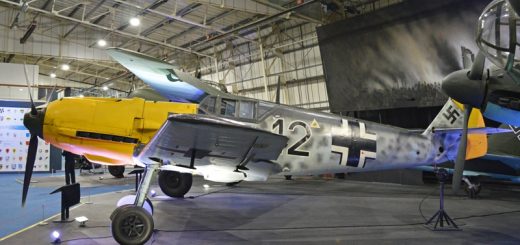
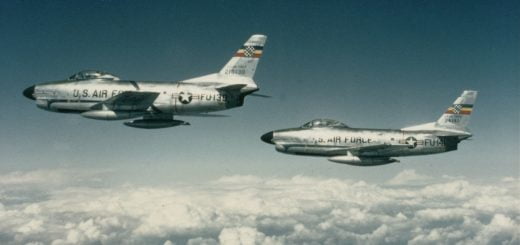
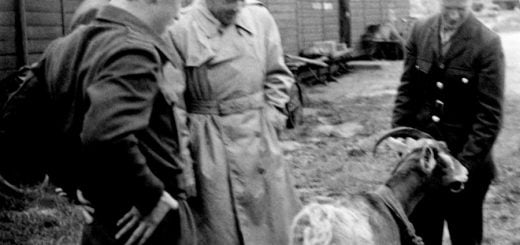








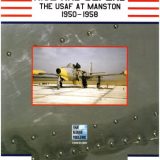
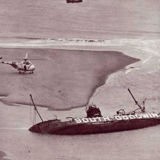
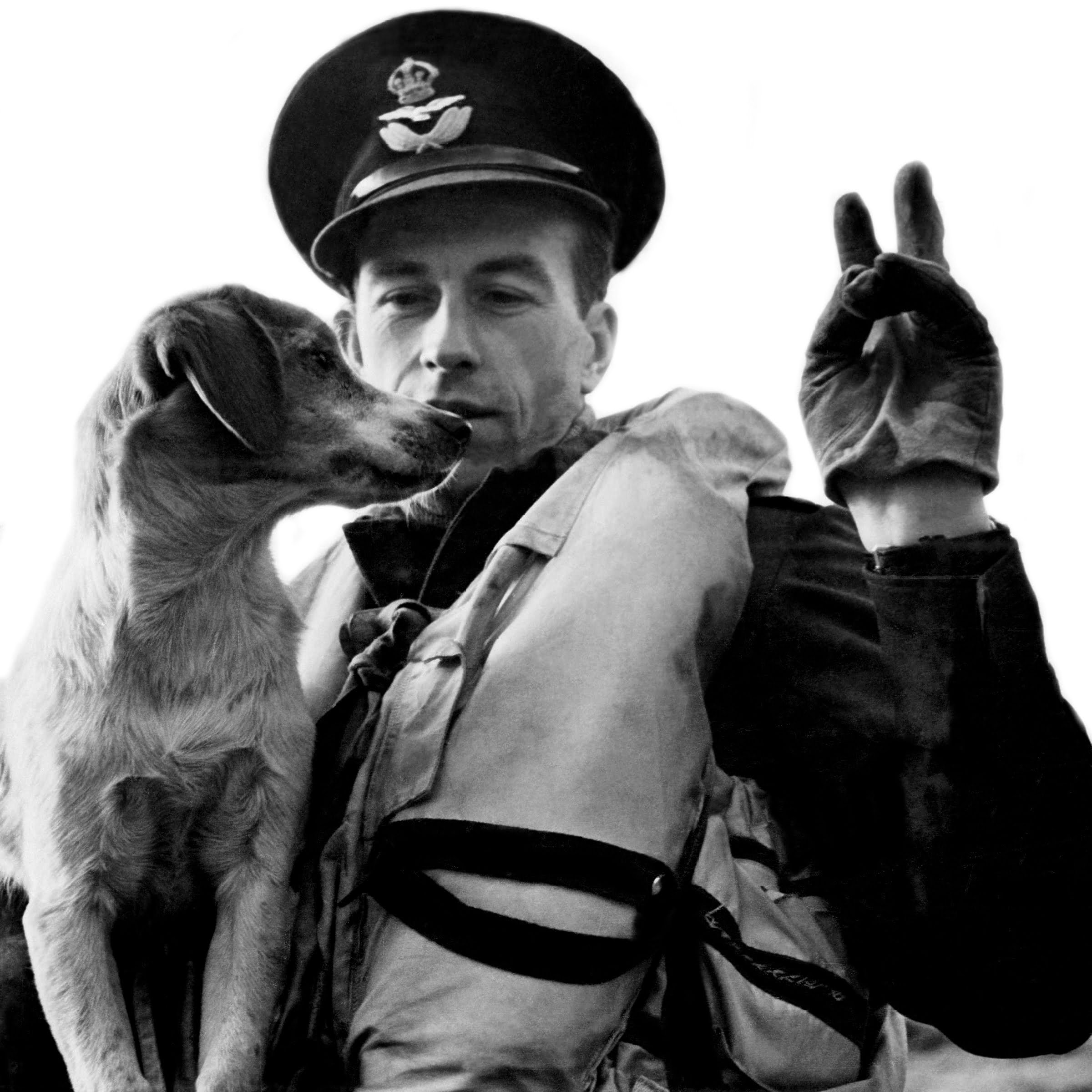
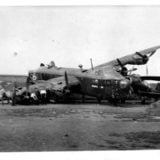
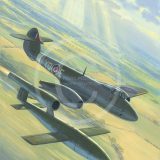
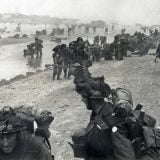
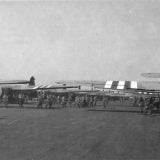

Jean Michel P.M.G. de Sélys-Longchamps was not a red but a blue-blooded Baron. Congratulations on a well-deserved entry of this Belgian officer on your website. However, the rank he was demoted to is incorrectly mentioned as “Captain-pilot”. He was demoted from Flight Lieutenant (equivalent of Captain) to Flying Officer (equivalent of 1st Lieutenant). A gong and a (bitter) song for the same act. How very British… (signed) Bart Materné, Colonel (equivalent to Group Captain in the RAF), Belgian Air Force.
Thanks Bart, now corrected.
in the legend of 609 sq, “Adj. Plt. Andrea ‘Le Men’ Blanco” instead of “Adj. Plt. André ‘Mel’ Blanco”
Thanks Patrick, now corrected.
Thank you for posting this article but please, please, please stop telling that Jean de Selys’ was arrested, tortured and killed by SIPO-SD: this is not true. His father was never arrested and died peacefully in 1966. There are a lot myths surrounding de Selys’ raid and I will debunk them in a biography that will be released in 2023. Thanks again for keeping Manston history alive!
Thanks Marc, now corrected.
Marc. Just discovered your new biography of Jean de Selys through this comment. As a French-speaker, I can’t wait to read and will buy when I’m in Brussels next week! Is there a plan to translate into English yet?
I’m curious about the street Jean de Selys flew down for the attack itself.
If I understand correctly, he flew southwards down Avenue Louise for a fly-by of the building, then broke left, did a teardrop turn over the Bois de la Cambre and then ran in on one of the diagonal streets from the east. Can anyone confirm which one? I can see several obvious candidates.